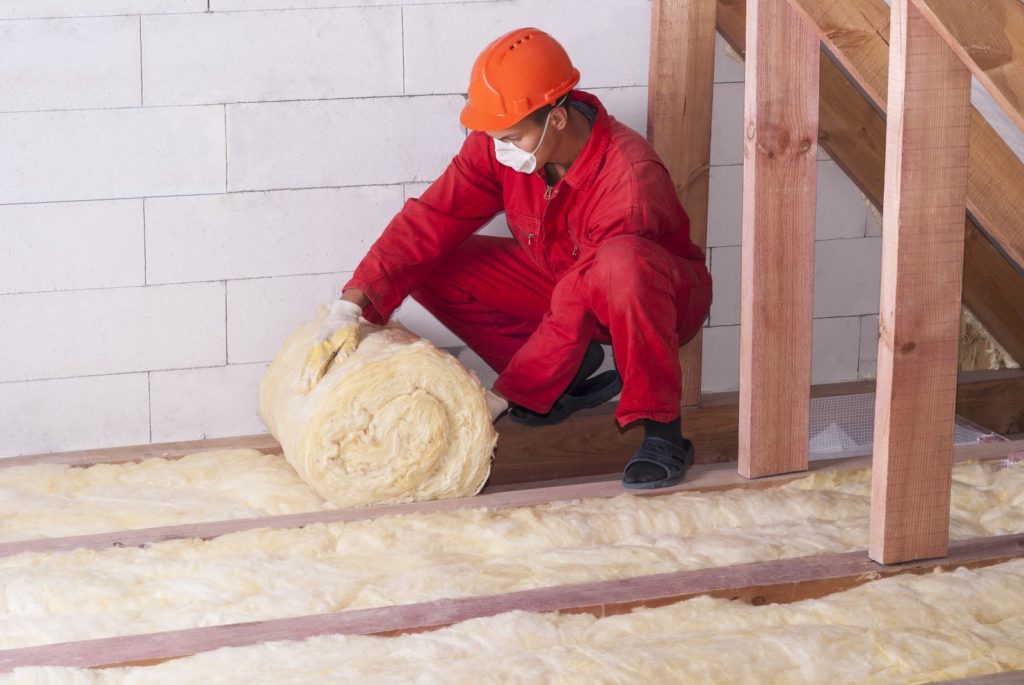As the weather gets cooler, you may find yourself wondering how to heat your home efficiently so that you don’t waste a lot of energy…or money.
While weather strips and a good HVAC system can play a part in how effectively your home stays warm in the winter, there’s an often overlooked area in many houses that might be seriously robbing you of your heat and your hard earned cash.
You guessed it…your dusty old attic.
While your attic may not be your favorite place to hang out, attic insulation is still a hugely underutilized method for keeping homes warm in the winter and cool in the summer.
The heat in your home naturally flows to colder areas, meaning that if your attic is not insulated, your heat is circulating where it shouldn’t be.
This means you’re wasting energy by keeping your thermostat raised higher than it should be just to make up for that lost heat.
Today we will share tips from industry experts on how to insulate your attic so that it’s airtight, warm, and properly ventilated.
Expert Tip #1: Seal Air Leaks First
Before you even think about insulating, it’s important to seal any air leaks first if you want your job to be truly effective.
According to This Old House, “Gaps in the attic or between the lower floors and the attic will let heated (or cooled) air escape to the great, unconditioned outdoors, making any insulation you add essentially useless.”
To find out where you have air leaks in your attic, check the following places:
- Around Your Attic Windows
If your windows are drafty, you can use spray foam around the window casing to keep things airtight. If the windows themselves still feel drafty, try to install weather stripping, too!
- Around Pipes, Ducts, And Outlets
Spray foam can also be used around any gaps in your ductwork, piping, or any electrical components in your attic. If your gaps are especially small, you can use a caulking or sealant in place of the spray foam.

Expert Tip #2: Consider Just Insulating The Floor With Blown In Attic Insulation
If budget is an issue, and you don’t use your attic as a functional space, you may want to consider just insulating the attic floor itself.
According to Ener Guide, “If you do not use the attic much, it is pointless heating this area. So insulating the floor of the attic is not only the best solution, but it is also the simplest and cheapest.”
For attics with a floor in place you have two insulation options.
- Pull up sections of the flooring and fill each section with fiberglass insulation.
- Hire a professional to blow loose fill insulation directly into the attic floor
While insulating just the floor will definitely help keep your home warmer, it is important to note that insulating the entire attic is a good idea for people who use the space or who plan on converting it into a living space sometime in the future.
Expert Tip #3: Be Mindful Of How You Ventilate
Proper ventilation in your attic will ensure that your attic will stay warm or cool while still keeping moisture at bay.
A big mistake that some homeowners accidentally make is covering up their soffit vents with insulation. This can happen if insulation is stuffed around the roof eaves and can lead to ice dams, mold growth, and damage.
Professional Home says,
“If you only add ventilation at the top of the attic, or in other words the ridge, via a ridge vent, stack effect will actually pull more moisture laden living space air into the attic from the rest of the house.
You need to also improve the soffit ventilation.
Soffit vents are openings on the underside of the overhang of the roof, or eaves. This will allow exterior air to enter at the low point in the attic, which will then rise and carry the excess moisture in the attic out the ridge vent that you already added.
By balancing the exterior air intake and outflow from the attic, you will be able to achieve significant moisture reduction and help prevent further mold growth.”
Whether you use your attic as a living space, or just a place to store your Christmas tree, insulating this area will ensure that your home can maintain an optimal temperature all year round.
To get a FREE quote on your attic insulation today, contact us at Hollister Roofing.
